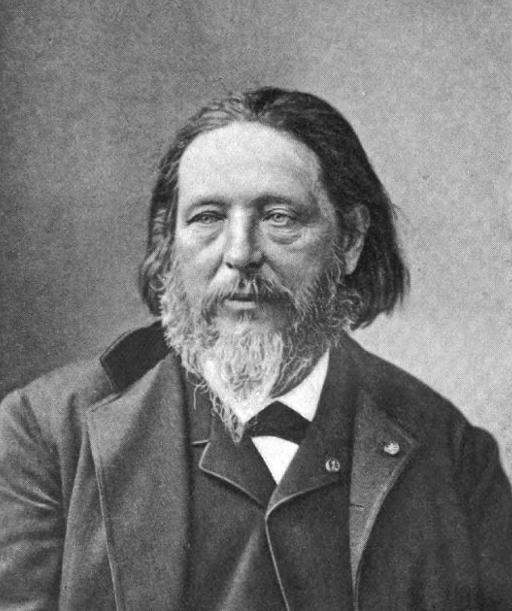Jules Breton (Jules Breton)

Painter and poet. Born to a well-known family from Courrières, a small village in northern France. His father was a landowner, though also worked as assistant judge and mayor, and managed the estate of the Duke of Duras. His mother died when Jules was just four years old, leaving him and his two brothers to be cared for by a nurse, Henriette, whom he called Mémère – their grandmother, and their uncle, Boniface Breton. In 1837 Jules was sent to school at a Catholic seminary, and three years later to the college of Douai, where he received a classical education. There he gained his first experience with drawing and classical literature; he also took a liking to poetry after reading Racine and La Fontaine. In the summer of 1843 he met Félix de Vigne, a Belgian artist and professor in the Academy at Ghent, who initially came to view a Breton’s uncle’s collection of books pertaining to clothing from diverse periods. Invited into the Breton household, de Vigne had a chance to view some works by the young artist. Impressed by what he saw, he invited Jules to study with him on a trial period for three months, which began in 1843 at the Royal Academy in Ghent. His studies in Belgium lasted for three years, after which he worked for a short time, about five or six weeks, under Gustave Wapper, a Romantic painter in Antwerp. With both men, Jules received a strong apprenticeship in the academic tradition which was reinforced by an awareness of the old masters. During his studies in Ghent, he had made his first trip to Paris, officially relocating there in 1847 to finish his training. He began studying under Michel-Martin Drolling at the École des Beaux-Arts. It was an exciting, often intimidating experience for Jules. In May of 1848 he was summoned back to Courrières, his native village, after his father fell ill. By 1852 he had begun painting landscapes in the Parisian suburbs and altered his style so that it would be more suitable to Salon entries and potential patrons. His health grew more and more fragile and he returned to Courrières to regain his strength. One of his most important works came out of this period, Les Glaneuses (The Gleaners), painted in 1854, which depicted peasants “gleaning” after the harvest. The principal figure in this work was his fiancée Élodie de Vigne, the daughter of his former art teacher Félix de Vigne, they were engaged April 29th, 1858. The subject matter of Les Glaneuses (The Gleaners) had important social and economic implications that may have earned it more respect and praise. He exhibited Bénédictions des Blés (The Blessing of the Wheat) at the Salon of 1857 which earned him a second-class medal and was also purchased by Napoleon III on behalf of the state. He returned to Paris in 1859 and shared a studio with Delalleau. Perhaps his most important work of the 1850s, Le Rappel des Glaneuses (The Recall of the Gleaners) was awarded a first class medal at the 1859 Salon and was also sent to international exhibitions in Vienna and Luxembourg. In 1861 he was named Chevalier de la Légion d’Honneur (promoted to Officer in 1867). In 1867 he exhibited ten paintings at the Exposition Universelle and was given a first-place medal. In 1872 he was given the medal of Honor at the Salon. Jules continued exhibiting at the Salons and was promoted from Officer to Commander of the Légion d’Honneur in 1885, and in 1886 he was elected as a member of the Insitut de France. In 1889-1900 he was also a jury member of the Salon. Towards the end of his career his works carried a more symbolic tone to them, often focusing on a single figure within the composition, such as Le Chant de l’Alouette (The Song of the Lark, a painting now in the Art Institute of Chicago) of 1884. This shift to attempt life-size figures may also have been influenced by his 1870 trip to Italy where he viewed the Sistine chapel and Giotto’s frescoes. After almost fifty years of consistent work, Jules died in Paris. (bio by: Shock) Family links: Spouse: Elodie De Vigne (1836 – 1909)* *Calculated relationship
Born
- May, 01, 1827
- France
Died
- July, 07, 1906
- France
Cemetery
- Cimetière de Montparnasse
- France

